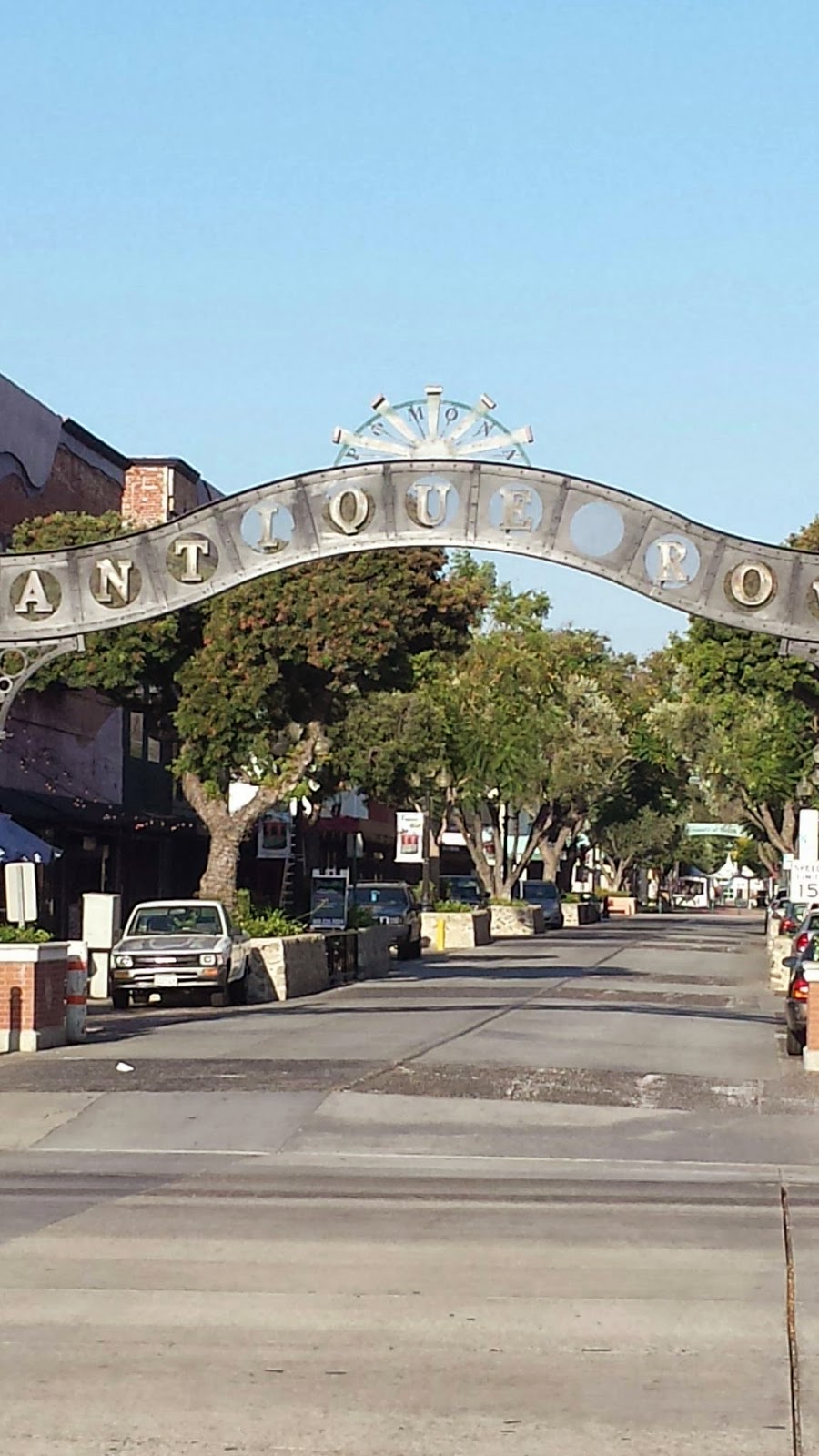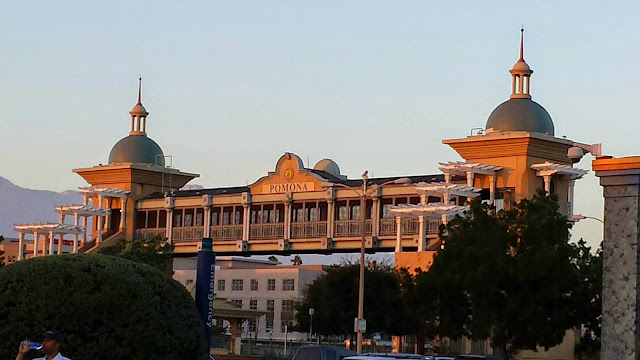Downtown Pomona has all the basic elements of "new urbanism" which, as I've mentioned in a previous post, is really just old urbanism rediscovered. Downtown Pomona, like many original downtowns in Southern California's "suburbs" provides a case study in how to redesign and retrofit the sprawl that surrounds it. Like many American cities in the 1960s Pomona pedestrianized one of their downtown streets (Second Street) in an attempt to compete with suburban malls. And like most other pedestrian malls, it failed. A couple decades later Pomona, like most of the other cities, reopened Second Street to vehicular traffic. One end of the street is called the Arts Colony and the other is Antique Row. Second Street seems to be the heart of downtown and you can see the great potential in the many old buildings to form the basis of a full fledged revival.
Welcome to downtown Pomona! Sorta...
Arts Colony entry
Arts Colony entry later in the evening.
Second Street. On-street parking, tree-lined, historic buildings built to the sidewalk, and patio dining.

Second Street later in the evening.
The other end of Second Street is Antique Row, which I wish they would drop because it sounds lame. They should consider a name change. "Second Street East"or something like that. Notice that although they've reintroduced vehicular traffic to the street, there are still driveways that signify to visitors that this is a shopping center rather than part an urban setting.
Metrolink Station provides connection to Union Station in downtown Los Angeles. One of the challenges for downtown Pomona is that this is also a freight route so there is a god deal of train noise. I suspect this might be one of the reasons that the residential development is practically non existent.
More on downtown Pomona in the next two posts.






No comments:
Post a Comment